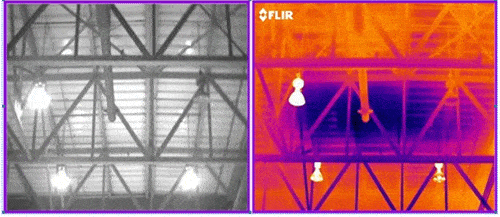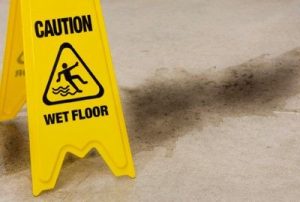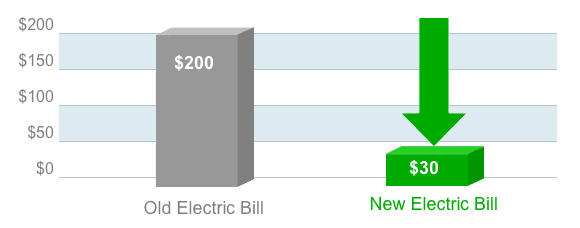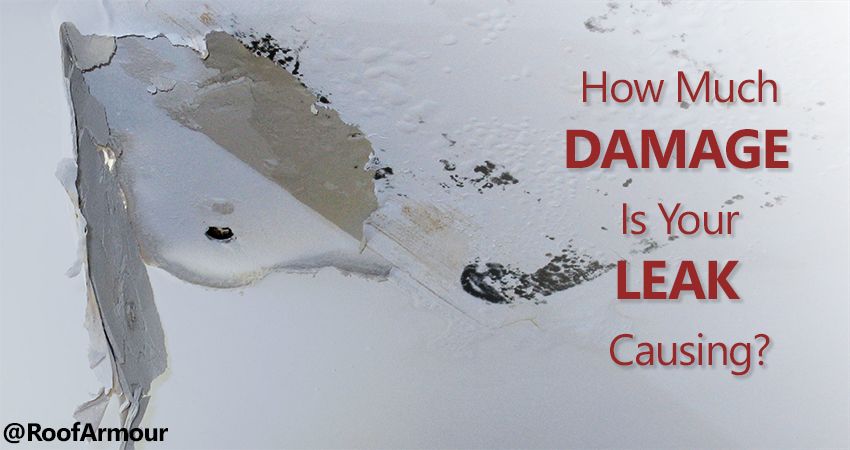Most people think roof leaks are only a minor issue, but it can actually pose several safety and even health risks. Constant water intrusion will eventually work down from the attic area to the foundation of the building, causing damage as it travels. Here are a few less obvious ways a roof leak may be ruining your building or home.
1. Attic, Ceiling, and Paint Damage
The initial dangers of a roof leak are damage to the attic area and items stored there. If there is no attic, or the size of the leak is really big, it will damage the interior ceiling. Affected ceiling paint will darken and ceiling plaster may bubble and expand. The leaking water also will damage paint on nearby walls.
Ceiling tiles fall and can cause damage to inventory: It doesn’t take much of a leak before water causes walls, floors and ceilings to deteriorate to the point it also damages furniture and equipment inside the building. Now the leak is impacting your ability to manufacture, work, or simply enjoy your surroundings.
2. Interior Mold, Insect and Contamination Issues
In the longer term, one of the most serious consequences of a leaking roof is mold and mildew growth. Mold can spread throughout the buildings structure, to the HVAC system and then to the rest of the home or building through the vents where it can invade carpets, furniture and even clothing.
Black mold is the most common type resulting from chronic water intrusion. Toxic black mold growth is rare, but even non-toxic black mold attacks wood framing, ceiling tiles, and wall and floor coverings.
Additionally, insects and other contaminates seems to appear around the same time. Costs to mitigate mold or exterminate insects can add up, not to mention code violations and disruptions to business operations.

Roof leaks equate to time and expenses that you might not have budgeted for, but its best to deal with them before the problems worsen.
3. Health Issues From Mold
Mold and mildew can also quickly lead to serious health issues, especially for those with high sensitivity, including nasal congestion, rhinitis, inflammation and asthma. Mold spores begin their growth cycle once the humidity reached 20% and continue to be produced once it’s present. This can lead to allergic reactions, asthmatic symptoms, persistant illnesses, and serious long-term health issues. Even once the leak is dealt with, mold can continue to flourish until treated.
4. Fire Hazards
Most electrical wiring is present in an attic or ceilings. A leaky roof could pose a fire threat from wires that short out. Water will generally travel and escape from areas of least resistance. Ceiling lighting and fans are common areas to experience active leaking. It is highly recommended to turn off electricity to the area that’s affected and have an electrician examine it before continued use, even after the roof leak is repaired.
5. Slip and fall hazard

A severely leaking roof can cause water to puddle on the floor. This may not seem like a huge risk, but if you have a busy plant, or visitors, especially children who like to run, you need to get that water cleaned up to prevent human falls. Be prepared for workers’ compensation claims, or litigation if the building is one where customers and or employees are present.
6. Higher utility bills and wasted energy
High utility bills are another consequence of a leaking roof. Water intrusion is detrimental to the insulation in the attic area. Your cellulose or fiberglass insulation becomes saturated and it takes a long time for it to dry out. If a roof leak repair is put off for too long, chronic water intrusion will deplete the insulation significantly and your home will lose hot and cool air, resulting in higher utility bills. It goes from being an insulator, saving you money, to a conductor, costing you additional money to heat and cool the building.

7. Compromised Structural Integrity
Water that penetrates the roof through a leak gets under the roof membrane and damages the deck, seams and mechanical fasteners, which in turn compromises your roof. In colder climates this can lead to ice formation under the laps, which, through expansion, further stresses the building and roof. The most obvious consequence of a leaking roof is the damaged rafters, ceiling joists, wall framing and even fascia boards and exterior trim can become victims of water intrusion. Chronic roof leaks lead to wood deterioration and weakened, rotten roof framing causes serious problems, requiring expensive rehabilitation.
Spongy and weak water-damaged wood can end in peeling paint, damaged ceilings, and buckled wall coverings. Structural damage is inevitable if there is a serious and long-standing roof leak. That means that a good chunk of deteriorated ceiling could give way and fall, damaging anything underneath.
How can something so physically small cause such large problems?
Beyond the damage to the roof itself, roof leaks can create several major headaches inside the building. Called “consequential damage,” these issues are unlikely to be covered by any roofing system warranty, and if left to fester, the cost of addressing these issues can be exponentially higher than what it would have cost to proactively maintain your roof in the first place.
Preventative Maintenance and Infrared Roof Inspections are key to eliminating these costly repairs.
If you wait until the water starts dripping, you risk higher repair costs and the added expense of interior damage. Plus, that puts you in a reactionary mode forcing you to wait for the repair technician to arrive.

